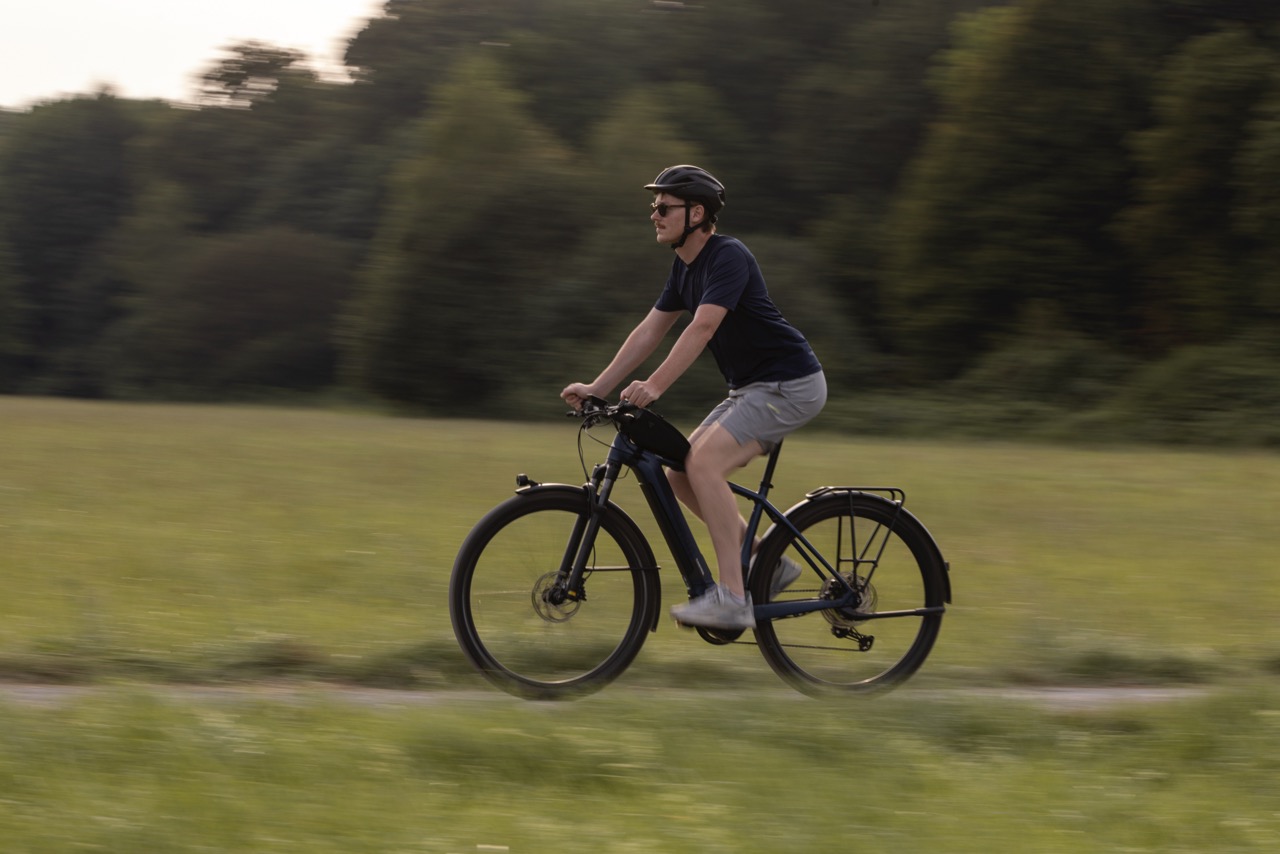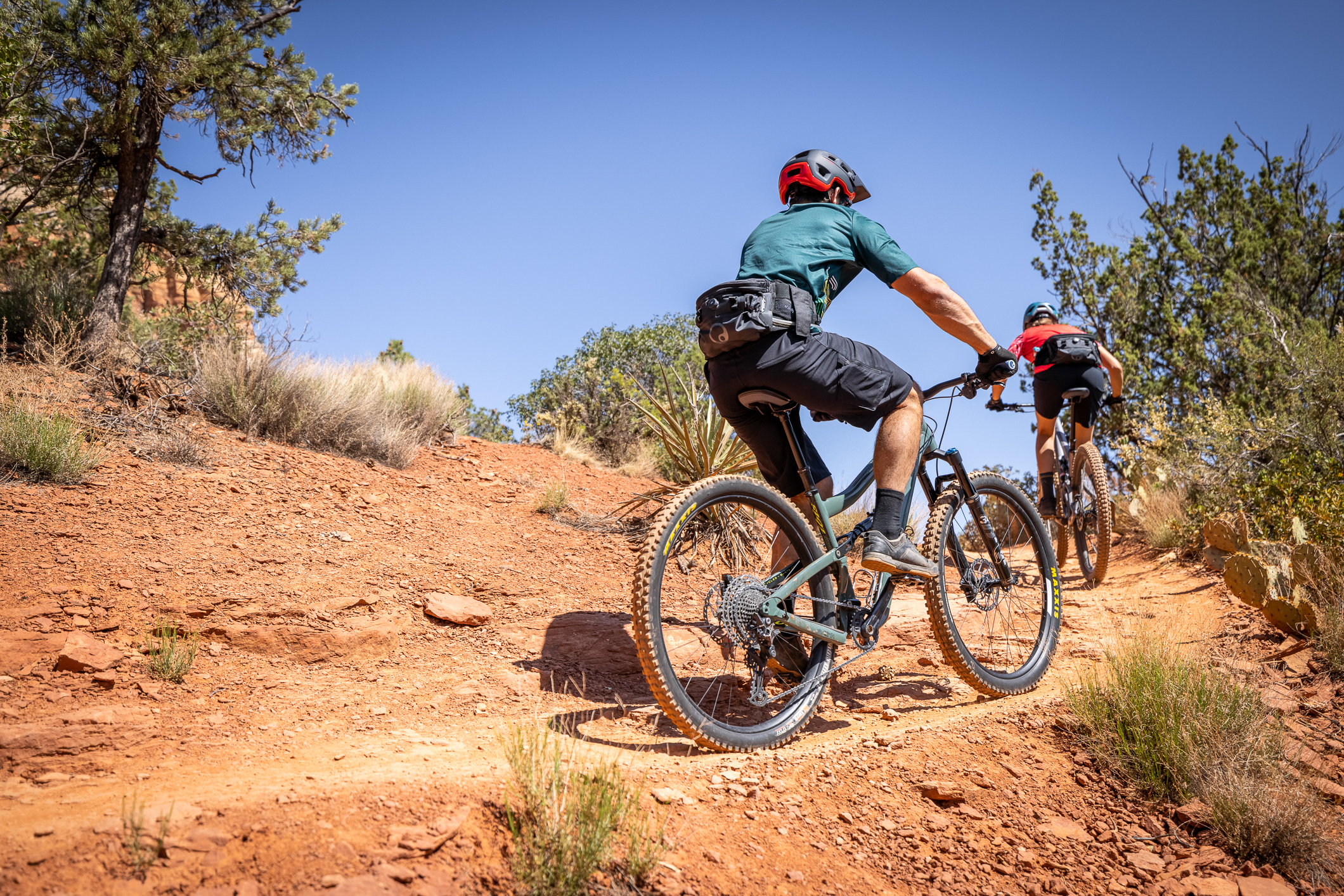Does Cycling Harm the Prostate?

Is Cycling a Danger to the Prostate? Many men wonder if cycling harms the prostate or their potency. This concern is not unfounded, as the pressure on the perineum and genital area while cycling can be uncomfortable and lead to health issues. This article clarifies whether and how cycling affects the prostate, which factors play a role, and how the right saddle choice and the optimal seating position can prevent potential problems.
How Does Cycling Affect the Prostate?
A large part of the body weight is transferred to the bike saddle when cycling. As a result, cyclists often – especially sporty riders who cover long distances – report numbness in the genital area. This results from prolonged, intense pressure on nerve pathways that run through and supply this area. "Usually, such complaints subside within hours, sometimes only after two to four weeks without permanent damage," says Dr. Uwe Nierkerken, Senior Urologist at Marienhaus Clinic in Neuwied. In extreme cases, increased pressure on the perineum can have adverse effects on the prostate. However, studies show that regular cycling is not necessarily harmful. The following factors minimize the risk:
- Proper Saddle: An ergonomically designed saddle, specifically developed for men, can reduce pressure on the perineum and thus relieve the prostate.
- Seating Position: The correct seating position distributes body weight evenly and reduces pressure on sensitive areas. With Ergon's Fitting Box, finding the right setting is child's play.
- Riding Technique: Regular breaks and changing the seating position during long rides can also help reduce pressure.

Expert Opinion: What Do Urologists and Ergonomists Say?
Dr. Uwe Niekerken, Senior Urologist and cycling expert, explains and reassures: "The prostate sits directly under the bladder and, protected by several other structures, relatively far from the skin of the seating area. Immediate pressure from any sitting, including cycling, is therefore not given." (More information can be found in this video on our Ergonomics YouTube channel.) Cause and effect are often confused or mixed up in this context. Prostate complaints are less likely to arise from cycling, but the strain of cycling can promote them. "There are indications that cyclists have an increased likelihood of developing prostatitis (prostate inflammation)," explains Dr. Kim Tofaute, sports ergonomist and bike fitter. "Some studies also show an increased likelihood of developing prostate cancer. One cause of increased risk can be injuries in the perineum area. Therefore, preventive measures should be taken to reduce strain on the perineum area by choosing the right saddle and optimal seating position, especially in case of complaints. Ultimately, the positive effects of cycling are significantly greater than the rarely occurring problems. Positive effects on the cardiovascular system, blood pressure, and metabolism are noteworthy here. So, ride a bike! And if you have problems, consult a urologist."
What Are the Risks?
Although cycling offers numerous health benefits, there are some risks to be aware of:
Increased PSA Level: The PSA level is an essential medical guideline for early detection of prostate cancer. Intensive cycling can temporarily increase the PSA level, which can lead to misinterpretations in prostate cancer screenings. It is recommended to avoid intensive cycling for at least 24 hours before such examinations.
Pressure Pain and Numbness: Prolonged pressure on the perineum can lead to numbness and pain. These symptoms should be taken seriously and addressed by adjusting the saddle or seating position.

Health Benefits of Cycling
Despite the mentioned risks, the benefits of cycling outweigh them:
- Improved Cardiovascular Health: Regular cycling strengthens the cardiovascular system and reduces the risk of heart disease.
- Weight Reduction: Cycling is an effective method to burn calories and control body weight.
- Muscle Strengthening: Cycling trains the leg muscles especially. Additionally, endurance sports, including cycling, support mental well-being.

The Right Saddle: What Should Men Pay Attention To?
A well-fitting saddle is crucial when cycling to avoid numbness in the genital area or prostate complaints. Here are some tips for choosing the right saddle:
- Ergonomic Shape: Choose a saddle specifically designed for the male anatomy with a cutout or depression in the perineum area. All Ergon saddles are designed and constructed according to gender-specific ergonomic principles.
- Size and Width: The saddle should be wide enough to distribute body weight evenly but not too wide to avoid friction. Our ergonomics pages have more information.
- Padding: Balanced padding—the perfect compression hardness and resilience ratio—increases comfort and reduces pressure on sensitive areas. Especially regarding the prostate, the sinking depth (to be regulated via foam hardness) should be chosen so that the deep structures of the prostate are not unnecessarily strained. The sit bones are there to dissipate pressure. Therefore, the padding should not be too soft.

Tips for the Right Seating Position
The correct seating position can also help minimize pressure on the structures in the seating area and, thus, on the deeper prostate. Consider the following points:
Saddle Height: The saddle should be adjusted so that your legs are almost straight while your heel rests on the bike pedal in its lowest position.
Saddle Tilt: Generally, the saddle should be set horizontally to avoid influencing the center of gravity. Ultimately, the saddle should only dissipate pressure, not redistribute it to the arms and torso. However, you can tilt the saddle nose slightly to exert less pressure on the perineum area.
Handlebar Position: The handlebar should be positioned so that you can take a relaxed and slightly forward-leaning posture.
For more information, we have an FAQ video on saddle and seating.

Conclusion: Does Cycling Harm the Prostate and the Structures in the Seating Area?
Cycling does not necessarily harm the prostate and surrounding structures if some critical points are considered. Most men can cycle without concerns with the right equipment, especially a suitable saddle, an optimal seating position, and attention to riding technique. However, listening to your body and consulting a specialist if complaints arise is essential.
Advantages and Disadvantages of Cycling for Your Health
| Advantages | Disadvantages |
| Improves cardiovascular health | Increased PSA level with intense exertion |
| Helps with weight reduction | Pressure pain and numbness |
| Strengthens muscles | Possible discomfort with the incorrect seating position |
For more information on choosing the right saddle, visit our Saddle Selector or check out all Ergon saddles. We have developed the Ergon Fitting Box to determine the optimal seating position.

Expert Opinion
Dr. Uwe Niekerken, Senior Urologist at Marienhaus Clinic in Neuwied, emphasizes: "The concern that cycling is generally harmful to the prostate is unfounded. With the right equipment and technique, men can pedal without worries and enjoy the many health benefits of cycling." When done correctly, cycling is a healthy and enjoyable sport. Inform yourself about the right equipment and seating position to protect your health and fully enjoy cycling.